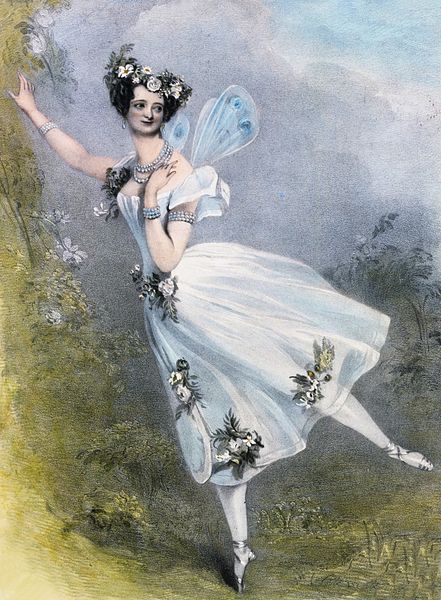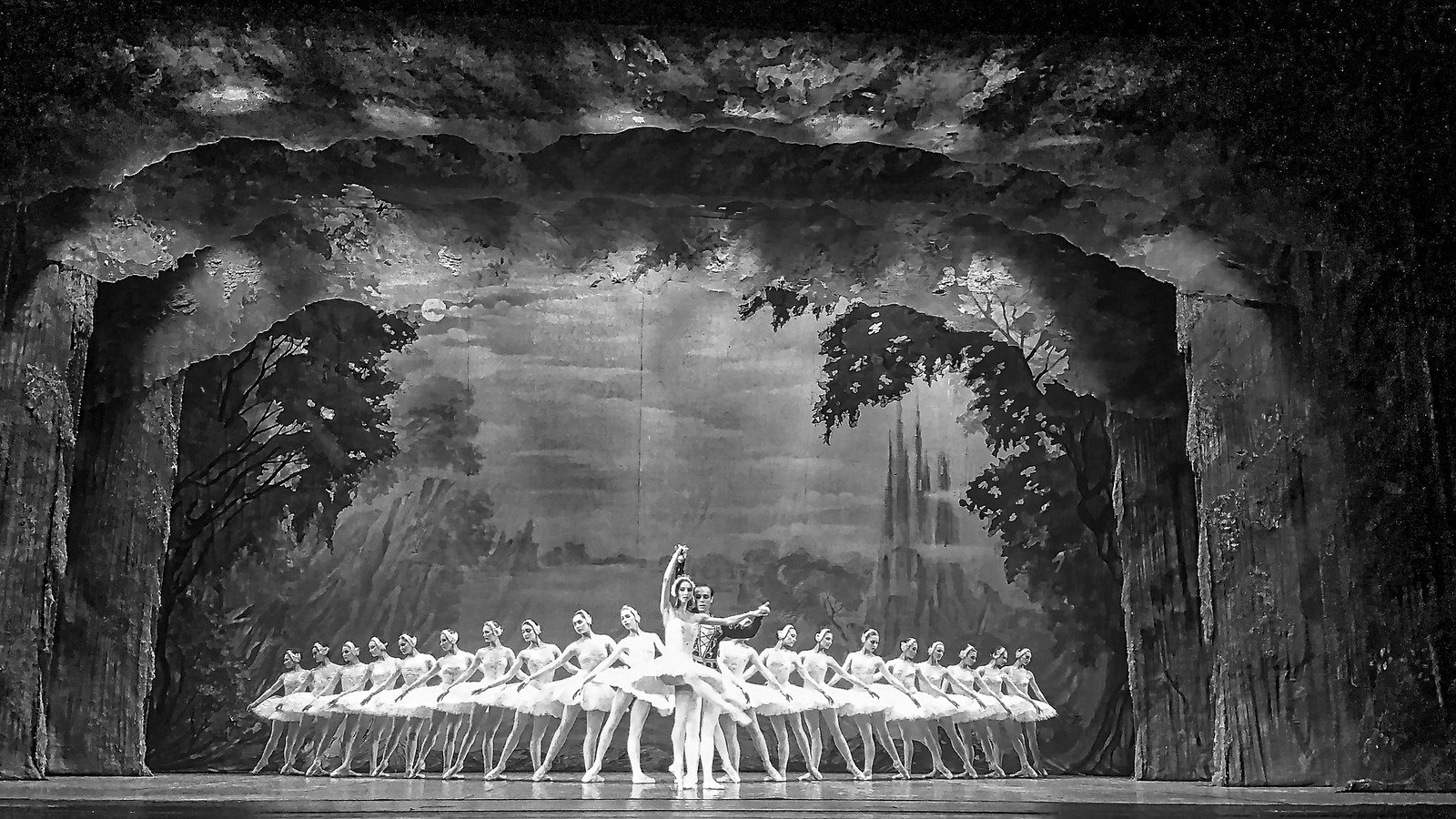ROMANTIC BALLET

Main article: Romantic ballet
Marie Taglioni as Flore in Charles Didelot’s ballet Flore et Zéphire (ca. 1831). She was a pioneer of pointework.
The Romantic movement in art, literature, and theatre was a reaction against formal constraints and the mechanics of industrialization. The zeitgeist led choreographers to compose romantic ballets that appeared light, airy and free that would act as a contrast to the spread of reductionist science through many aspects of daily life that had, in the words of Edgar Allan Poe, “driven the hamadryad from the woods”.
These “unreal” ballets portrayed women as fragile unearthly beings, ethereal creatures who could be lifted effortlessly and almost seemed to float in the air. Ballerinas began to wear costumes with pastel, flowing skirts that bared the shins. The stories revolved around uncanny, folkloric spirits. -4- An example of one such romantic ballet is La Sylphide, one of the oldest romantic ballets still performed today.
One strain of the Romantic movement was a new exploration of folklore and traditional ethnic culture. This influence was seen in the emergence of European folk dance and western portrayals of African, Asian, and Middle East peoples on European stages. In ballets from this period, non-European characters were often created as villains or as silly divertisements to fit the orientalist western understanding of the world. The National Opera of Ukraine, a performing arts theatre with a resident opera company, was established in Kiev in 1867. It also included a small resident troupe of ballet dancers, who would perform mainly folk-style dancing during opera productions. By 1893, this grew to a troupe large enough to stage large ballets. Folk dancing and ballets with Ukrainian stories were among the early productions.
Many leading European professional ballet companies that survive today were established at new theatres in Europe’s capital cities during the mid- to late- 19th century, including the Kiev Ballet, the Hungarian National Ballet, the National Theatre Ballet (Prague) and the Vienna State Ballet (formerly the Vienna State Opera Ballet). These theatres usually combined large opera, drama and ballet companies under the same roof. Composers, dramatists, and choreographers were then able to create works that took advantage of the ability to collaborate among these performance troupes.


